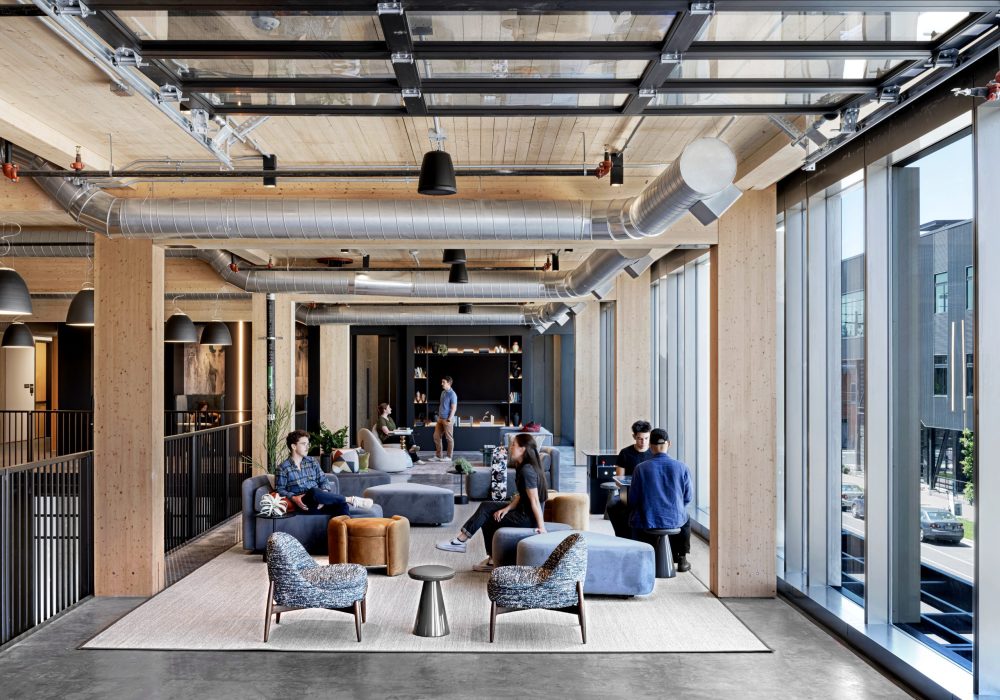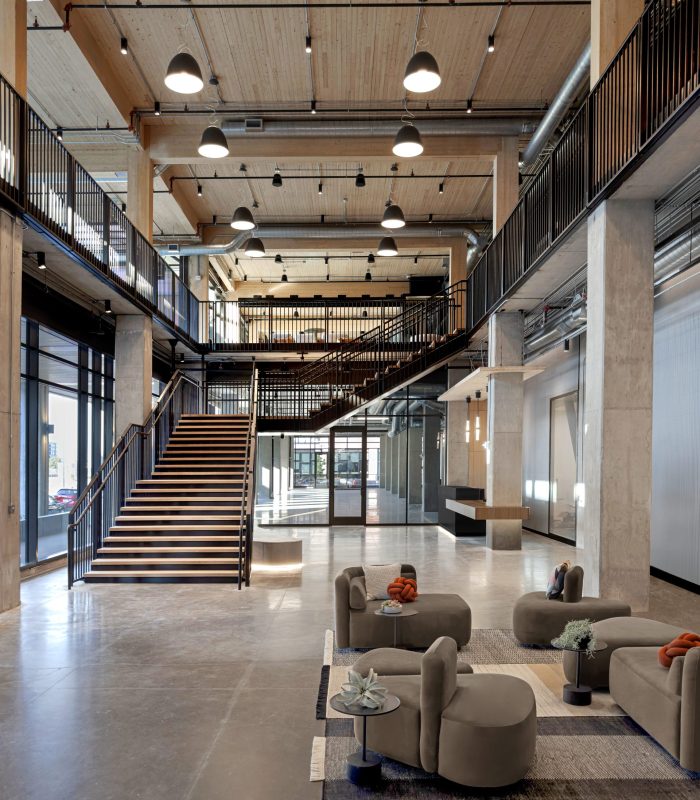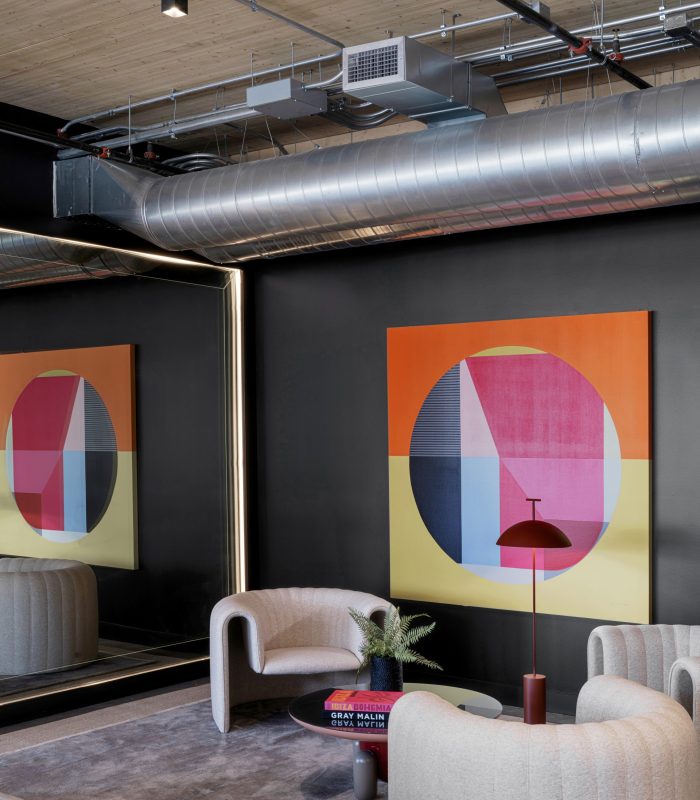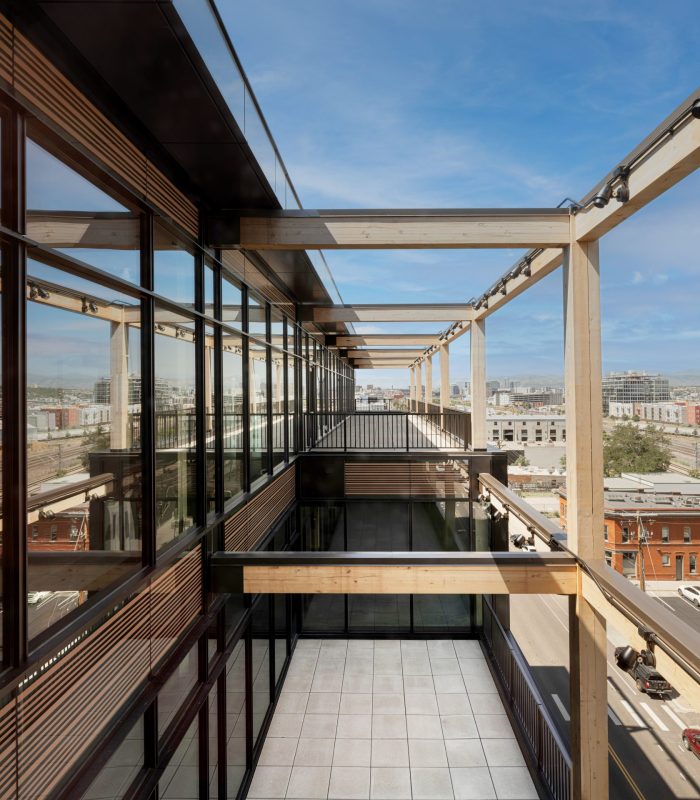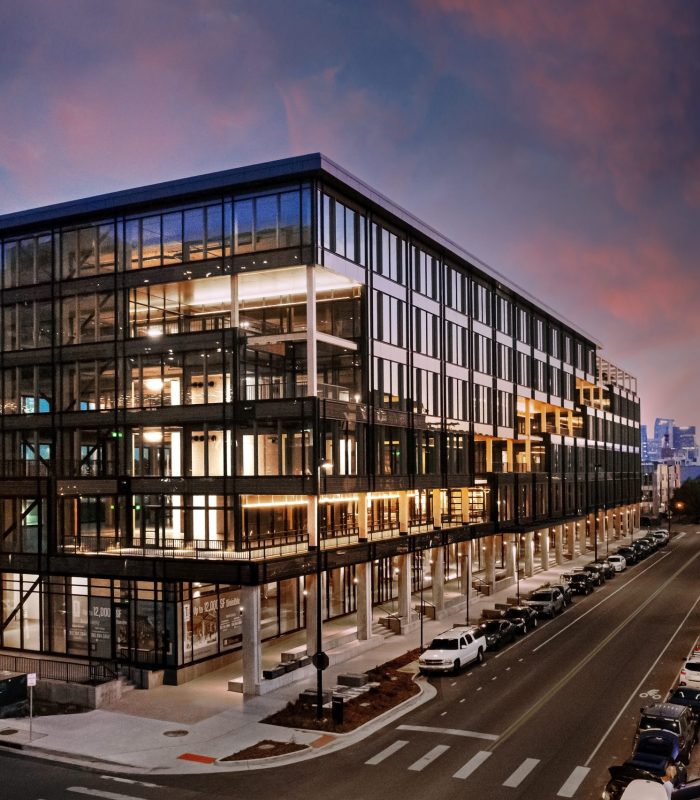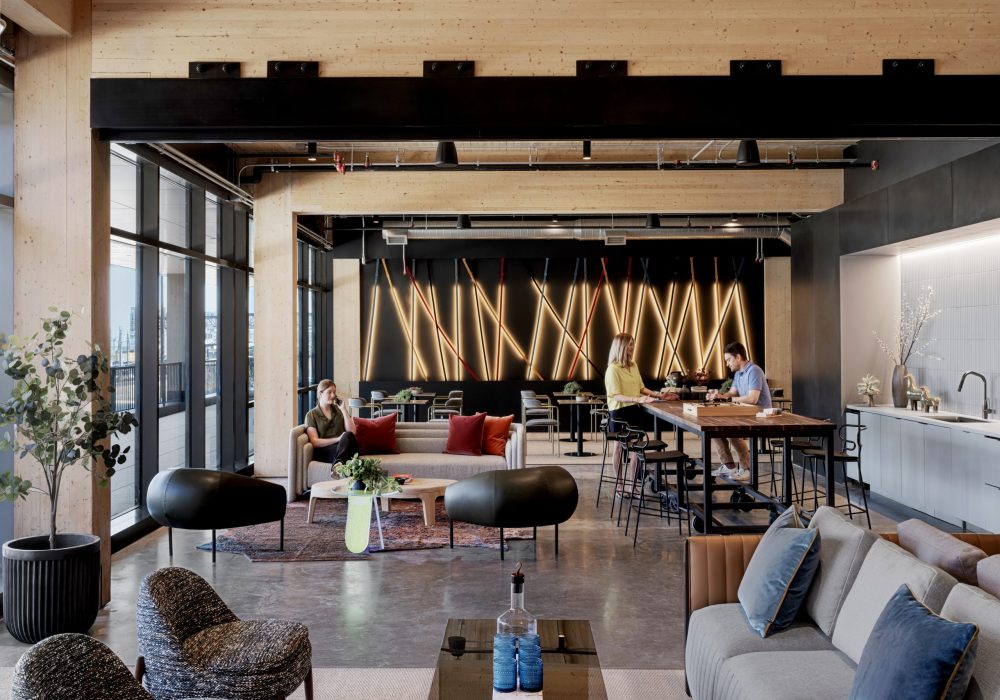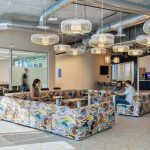T3 Denver RiNo
LOCATION
Denver, Colorado
AREA
264,100 GSF
PROJECT DESCRIPTION
The six-story T3 Denver RiNo building is the latest addition to the City’s creative center, the River North Art District (RiNo). Following Hines Interest’s T3 model, the building features a refined industrial, heavy-timber-structured design inspired by the artistic surroundings. The model, which stands for Timber, Transit, and Technology, is seen throughout the design and the philosophy of the building’s components. In addition to providing a warm and inviting architectural design, timber keeps carbon out of the atmosphere and reiterates the stakeholder’s commitment to a more sustainable future.
The design and sustainability components combine to create a powerful selling point for offices looking to attract and retain the area’s top talent. Conveniently located next to public transit, development visitors, whether commuting by rail, bike, or bus, will benefit from an efficient commute. Connectivity systems and destination dispatch elevators are two of the many features that bolster the development’s technology, creating an innovative and secure facility where employees can connect securely and efficiently.
PROJECT HIGHLIGHTS
- Three air-cooled chillers located on the structure’s roof service the HVAC system and feed floor-by-floor multizone air handling units. Heat is provided by condensing boilers situated in the mechanical penthouse. Three energy recovery ventilators provide ventilation throughout the entire building and pre-condition air with the building’s exhaust and relief air, aiding in the achievement of the structure’s ENERGY STAR accreditation.
- The multizone air handling units have built-in temperature and airflow controls, which help maximize the “clean” aesthetic the client envisioned for the building. Integral temperature and airflow controls at the multizone units eliminate the requirement for variable air volume (VAV) terminal units in the tenant space.
- The building management control system (BMCS) is incredibly advanced in pursuing energy efficiency goals and sustainable longevity of the mechanical and electrical components’ life cycles. Excluding the exhaust fans in the electrical rooms, each component of the mechanical system is connected to the BMCS, which allows the owner to customize a control schedule that optimizes efficiency.
- The electrical distribution method also shortens the conduit runs stemming from the electrical room, which aids in the building’s pursuit of energy efficiency. A diesel emergency generator provides the building’s life-safety components with power in an emergency. Although the building isn’t a high-rise, our team included life safety features that would support a high-rise building to provide an enhanced level of safety and security.
Photography credit: MaRS Culture
Learn more about our commercial office portfolio.



